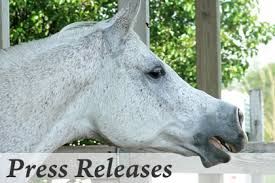Planning for a New Horse Barn
MORTON, Ill. — As with any building project, proper planning is key in designing a new horse barn that meets the needs of the animals and the people who care for them. That means taking into consideration functionality as well as aesthetics to ensure the new facility will be enjoyed now and for years to come.
Dan Nyberg, a building design expert with Morton Buildings, offers the following recommendations for building a new horse barn:
Be realistic about future needs — In determining barn size, don’t limit the building dimensions based on how many horses you have now. That number may increase as your family or equestrian activities expand in future years. “For example, build a six-stall barn and finish only two stalls now, and use the remaining space for a tack room and feed storage,” Nyberg says. “It will be far more cost-effective to build in additional stalls later rather than having to expand the barn.”
Think about utilities — Nyberg says new barn owners often think they won’t need water and electric connections in their facility, only to wish later they had planned for that. It will be more efficient to incorporate those services now versus installing them later. And in colder climates, remember to include a frost-proof hydrant.
Consider your horse management style — An important factor in the planning process is how you manage your horses. “Some owners like to leave their animals in the pasture during the daytime; others prefer the convenience of having Dutch doors that give horses access to outdoor paddocks from their stalls,” he says. “How you intend to manage your horses will have a direct bearing on the barn design.”
Factor in feed management — Will you store hay within the barn or in a separate structure? If inside, a 12-by-12-foot stall can hold about 200 small square bales. Also, consider how you plan to purchase feed. Will it be delivered by a supplier or do you plan to pick up hay directly from the field? And will you be purchasing a full-year supply or smaller quantities on a regular basis? “All of these factors will impact the square footage requirements of your facility,” Nyberg says.
Plan for the right stall sizes — Consider not only the type of horses you own today, but also those you may have in the future. A 10-by-10-foot stall may be fine now for a child’s pony, but perhaps not for the larger horse they want when they’re older. “It’s far better to have a smaller horse in a large stall than trying to cram a large animal into a stall that’s too small,” he says.
Ensure good ventilation — Windows and doors alone may not be sufficient ventilation to address the ammonia formed as urine breaks down. Nyberg says installing a ceiling fan can be more effective in moving air down into the stalls and creating air flow through the center of the barn compared to just opening windows and doors.
Take advantage of natural lighting — Ceiling skylights or translucent sidelights installed at the top of barn walls will allow more light into the barn, creating a more enjoyable environment. “The horses may or may not be happier, but most owners don’t want their animals to stand in the dark,” Nyberg notes.
Plan for floor comfort and safety — Equipping stalls with dense rubber mats, 1 ½ inches thick, on top of a poured concrete floor will provide comfort while also helping to prevent slips and falls for people and animals. In other areas of the barn with a concrete surface, use a textured instead of a trowel finish, which can be slippery when wet.
Consider functional aesthetics — Nyberg notes that design features such as cupolas and wainscots can add visual appeal to a new barn. Other aesthetics can also provide functional benefits. “For example, a Diamond M door with a fixed window for the top half enables you to work in the barn and still be able to keep an eye on what’s going on outside,” he says.
Nyberg says keeping horses comfortable and safe is the No. 1 priority when constructing a new equestrian barn. But you also want a stylish and functional building that is durable and can withstand the demands of housing your equine companions. Proper planning can help achieve both goals.
For additional information, visit www.mortonbuildings.com/projects/equestrian.
Written by:
Press Release
Related Articles
Stay on top of the most recent Horse Health news with










